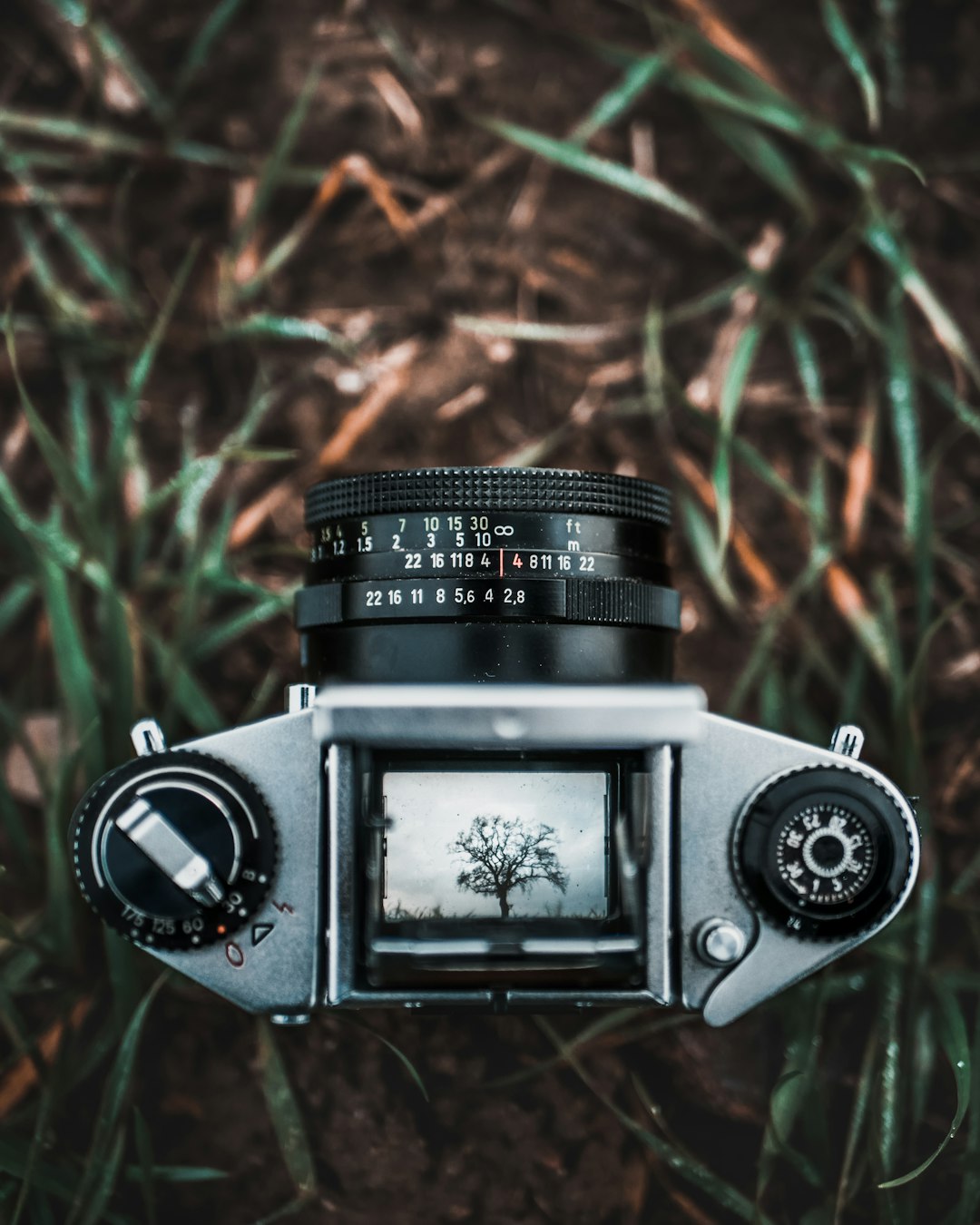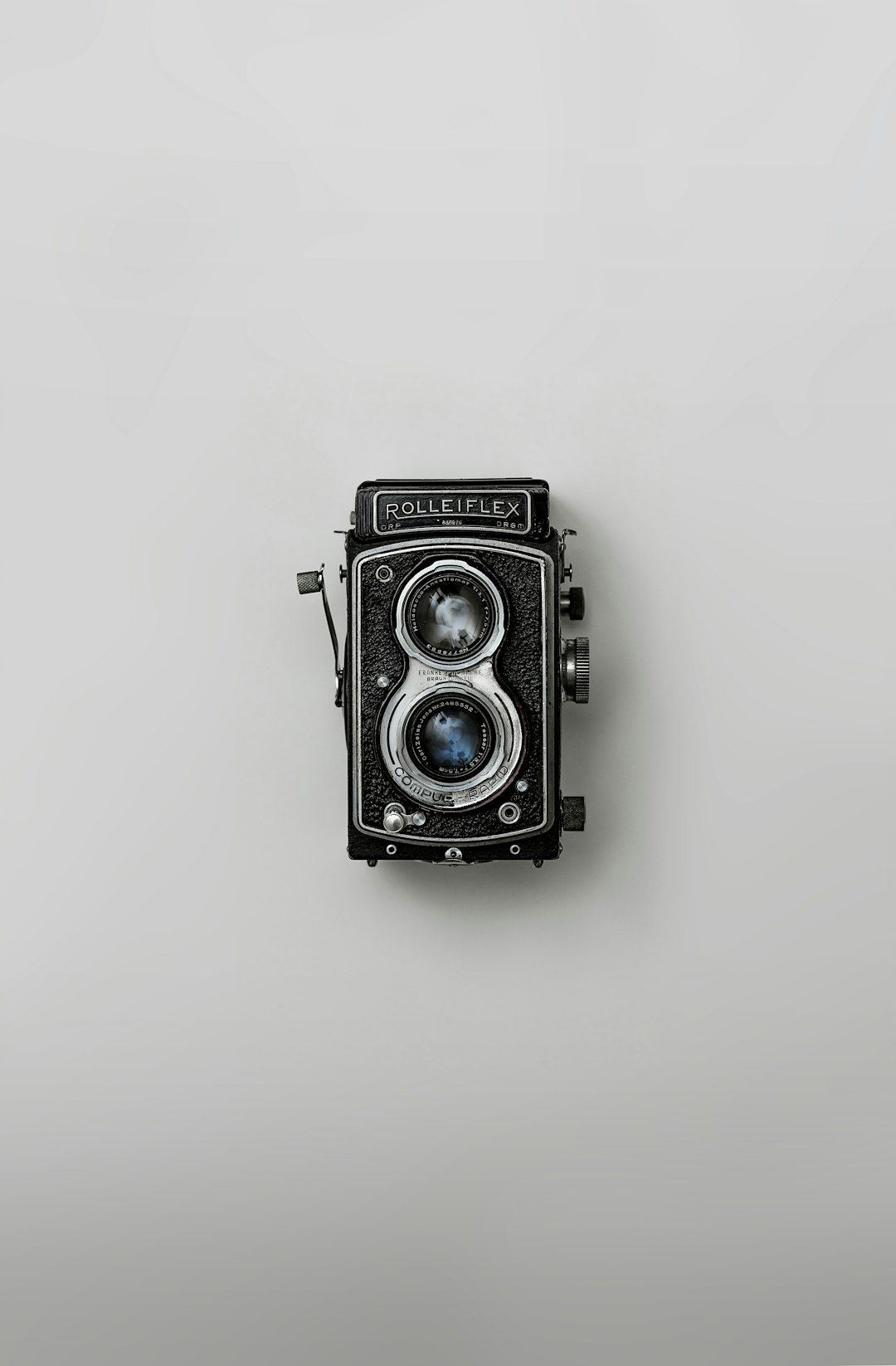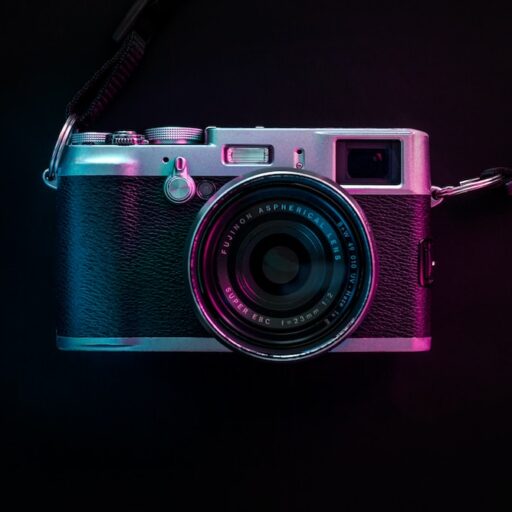Support our educational content for free when you purchase through links on our site. Learn more
Which Camera is Best for Photography: DSLR or Mirrorless? [2024] 📷
Capture Moments with Cameras
Introduction: 📸
Imagine this: you’re standing on a picturesque mountaintop, the sun setting behind you, casting a warm glow on the landscape. You reach for your camera, ready to capture this breathtaking moment forever. But wait, which camera should you use? DSLR or mirrorless? It’s a question that many photographers, both amateur and professional, grapple with. In this comprehensive guide, we’ll dive deep into the world of DSLR and mirrorless cameras, exploring their features, advantages, and disadvantages. By the end, you’ll have a clear understanding of which camera is best for your photography needs. So, let’s get started and find the perfect camera to capture your most precious moments!
Table of Contents:
- Quick Answer
- Quick Tips and Facts
- Background: The Evolution of DSLR and Mirrorless Cameras
- Advantages of DSLR Cameras
- Disadvantages of DSLR Cameras
- Advantages of Mirrorless Cameras
- Disadvantages of Mirrorless Cameras
- Image Quality: DSLR vs. Mirrorless
- Autofocus Speed: DSLR vs. Mirrorless
- Size and Weight: DSLR vs. Mirrorless
- Battery Life: DSLR vs. Mirrorless
- Video Quality: DSLR vs. Mirrorless
- Lenses and Accessories: DSLR vs. Mirrorless
- Durability: DSLR vs. Mirrorless
- FAQ
- Conclusion
- Recommended Links
- Reference Links
Quick Answer
If you’re short on time and need a quick answer, here it is: mirrorless cameras are the best choice for most photographers. They offer a winning combination of compact size, fast shooting speed, excellent video quality, and advanced autofocus capabilities. However, DSLR cameras still have their merits, particularly in terms of battery life and lens selection. Ultimately, the best camera for you depends on your specific needs and preferences.
👉 CHECK PRICE on: Mirrorless Cameras | DSLR Cameras
Quick Tips and Facts
Before we dive into the details, here are some quick tips and facts to keep in mind:
✅ Mirrorless cameras are generally more compact and lightweight compared to DSLRs, making them ideal for travel and street photography.
✅ DSLRs have been around for decades and offer a wide range of lenses and accessories to choose from.
✅ Mirrorless cameras excel in video recording, thanks to their advanced autofocus systems and electronic viewfinders.
✅ Both DSLR and mirrorless cameras can produce high-quality images, so don’t get too caught up in the technical specifications.
✅ Battery life is typically better on DSLR cameras, making them a reliable choice for long shoots.
✅ Mirrorless cameras often feature in-body image stabilization (IBIS), which helps reduce camera shake and allows for sharper handheld shots.
✅ The choice between DSLR and mirrorless ultimately comes down to personal preference and shooting style.
Now that you have a general idea, let’s explore the background and history of DSLR and mirrorless cameras.
Background: The Evolution of DSLR and Mirrorless Cameras

To understand the differences between DSLR and mirrorless cameras, it’s essential to delve into their evolution. DSLR, which stands for Digital Single-Lens Reflex, has been the go-to choice for professional photographers for many years. These cameras use a mirror and prism system to reflect light into an optical viewfinder, allowing you to see exactly what the lens sees.
On the other hand, mirrorless cameras are a relatively new addition to the photography world. They eliminate the need for a mirror and optical viewfinder, instead using a digital preview through an electronic viewfinder or the rear LCD screen. This design allows for a more compact and lightweight camera body.
Now that we have a basic understanding of the two camera types, let’s explore their advantages and disadvantages in more detail.
Advantages of DSLR Cameras
DSLR cameras have stood the test of time and continue to be a popular choice among photographers. Here are some of the advantages they offer:
1. Wide Range of Lenses and Accessories
DSLR cameras have been around for decades, which means there is an extensive selection of lenses and accessories available. Whether you’re shooting landscapes, portraits, or wildlife, you’ll find a lens that suits your needs. Additionally, DSLRs are compatible with a wide range of third-party lenses, giving you even more options to choose from.
2. Optical Viewfinder
One of the key advantages of DSLR cameras is the optical viewfinder (OVF). When you look through the viewfinder, you see the scene directly through the lens, providing a clear and natural view. This can be particularly beneficial in bright sunlight or fast-paced shooting situations where an electronic viewfinder may struggle to keep up.
3. Better Battery Life
DSLR cameras typically have better battery life compared to mirrorless cameras. This is because DSLRs use an optical viewfinder, which consumes less power than an electronic viewfinder. If you’re planning on long shoots or traveling to remote locations without easy access to charging, a DSLR may be the better choice.
4. Ergonomics and Handling
DSLR cameras are known for their ergonomic design, with a comfortable grip and intuitive button layout. If you have larger hands or prefer a more substantial camera body, a DSLR may feel more comfortable in your hands. Additionally, DSLRs often have a dedicated mode dial and physical buttons for quick access to essential settings.
5. Optical Flash Sync
For photographers who frequently use external flashes, DSLR cameras offer the advantage of optical flash sync. This means you can trigger off-camera flashes using the built-in flash or an external flash mounted on the camera. This feature is particularly useful in studio or off-camera lighting setups.
Now that we’ve explored the advantages of DSLR cameras, let’s take a look at some of their disadvantages.
Disadvantages of DSLR Cameras
While DSLR cameras have their merits, they also come with a few drawbacks. Here are some of the disadvantages you should consider:
1. Size and Weight
DSLR cameras tend to be bulkier and heavier compared to mirrorless cameras. This can be a significant factor if you’re traveling or shooting for extended periods. Carrying around a heavy camera and lens setup can quickly become tiring, especially if you’re hiking or exploring remote locations.
2. Limited New Releases
As mirrorless cameras gain popularity, many camera manufacturers are focusing their efforts on developing new mirrorless models. This means that DSLR cameras may receive fewer updates and new releases in the future. While there is still a vast selection of DSLR cameras available, the industry’s focus is shifting towards mirrorless technology.
3. Limited Video Features
While DSLR cameras can capture high-quality video, they often lack advanced video features found in mirrorless cameras. If you’re primarily interested in videography or vlogging, a mirrorless camera may be a better choice. Mirrorless cameras offer features like 4K video recording, advanced autofocus tracking, and in-body image stabilization, making them ideal for video creators.
4. Lack of Silent Shooting
DSLR cameras use a mechanical shutter, which can produce a noticeable sound when capturing images. This can be a disadvantage in situations where silence is crucial, such as weddings, wildlife photography, or street photography. Mirrorless cameras, on the other hand, offer silent shooting modes, allowing you to capture images discreetly.
Now that we’ve explored the advantages and disadvantages of DSLR cameras, let’s shift our focus to mirrorless cameras and their unique features.
Advantages of Mirrorless Cameras
Mirrorless cameras have taken the photography world by storm, offering a range of advantages that make them a compelling choice for many photographers. Here are some of the advantages of mirrorless cameras:
1. Compact and Lightweight
One of the most significant advantages of mirrorless cameras is their compact size and lightweight design. Without the need for a mirror and optical viewfinder, mirrorless cameras can be significantly smaller and lighter than their DSLR counterparts. This makes them ideal for travel, street photography, and any situation where portability is essential.
2. Electronic Viewfinder (EVF)
Mirrorless cameras use an electronic viewfinder (EVF) or a rear LCD screen to provide a digital preview of the scene. This allows you to see exactly how your image will turn out before you press the shutter button. Additionally, EVFs offer features like real-time exposure simulation, focus peaking, and histogram display, giving you more control over your final image.
3. Advanced Autofocus System
Mirrorless cameras often feature advanced autofocus systems with a high number of autofocus points and fast tracking capabilities. This makes them ideal for capturing fast-moving subjects, such as sports or wildlife photography. Additionally, mirrorless cameras can utilize the entire image sensor for autofocus, resulting in more accurate and precise focusing.
4. In-Body Image Stabilization (IBIS)
Many mirrorless cameras come equipped with in-body image stabilization (IBIS), which helps reduce camera shake and allows for sharper handheld shots. With IBIS, you can capture crisp images even in low-light conditions without the need for a tripod. This feature is particularly beneficial for photographers who shoot in challenging lighting situations.
5. Excellent Video Quality
Mirrorless cameras are known for their exceptional video capabilities. They often offer features like 4K video recording, high frame rates, and advanced autofocus tracking, making them a favorite among videographers and content creators. If you’re interested in capturing high-quality videos, a mirrorless camera is an excellent choice.
Now that we’ve explored the advantages of mirrorless cameras, let’s take a look at some of their disadvantages.
Disadvantages of Mirrorless Cameras
While mirrorless cameras offer many advantages, they also come with a few disadvantages. Here are some of the drawbacks you should consider:
1. Poorer Battery Life
Mirrorless cameras typically have poorer battery life compared to DSLR cameras. This is because they rely on electronic viewfinders and continuous sensor operation, which consume more power. If you’re planning on long shoots or traveling without easy access to charging, you may need to carry extra batteries or a portable power bank.
2. Limited Lens Selection (in comparison to DSLRs)
While mirrorless lens options have grown significantly in recent years, they still have a more limited selection compared to DSLR cameras. DSLRs have been around for decades, which means there is a vast array of lenses available from various manufacturers. However, mirrorless lens options continue to expand, and most essential focal lengths are covered by major camera manufacturers.
3. Preference for Optical Viewfinders
Some photographers prefer the optical viewfinder (OVF) found in DSLR cameras over the electronic viewfinder (EVF) in mirrorless cameras. The OVF provides a direct, unprocessed view of the scene, which some photographers find more immersive and natural. However, EVFs have improved significantly in recent years, offering high resolution and real-time exposure simulation.
4. Higher Cost
Mirrorless cameras, especially high-end models, can be more expensive compared to entry-level DSLR cameras. This is partly due to the advanced technology and features packed into mirrorless bodies. However, as mirrorless technology becomes more widespread, prices are gradually becoming more competitive.
Now that we’ve explored the advantages and disadvantages of both DSLR and mirrorless cameras, let’s compare their image quality.
Image Quality: DSLR vs. Mirrorless
When it comes to image quality, both DSLR and mirrorless cameras can produce stunning results. The image quality primarily depends on the camera’s sensor, lens, and the photographer’s skill. Here are a few factors to consider:
1. Sensor Size and Megapixels
Both DSLR and mirrorless cameras come in various sensor sizes, ranging from full-frame to APS-C and Micro Four Thirds. Generally, larger sensors tend to offer better low-light performance and dynamic range. However, advancements in sensor technology have made smaller sensors capable of producing excellent image quality as well. Megapixels, on the other hand, determine the level of detail in your images. Higher megapixel counts can be beneficial if you plan on printing large-format images or cropping extensively.
2. Lens Quality
The quality of the lens you use plays a significant role in image quality. Both DSLR and mirrorless cameras offer a wide range of lenses, from budget-friendly options to high-end professional glass. Investing in high-quality lenses can significantly improve the sharpness, contrast, and overall image quality of your photographs.
3. Image Processing
Image processing algorithms differ between camera manufacturers, resulting in variations in image quality. Some cameras produce more vibrant colors, while others prioritize accurate color reproduction. Additionally, different cameras handle noise reduction and sharpness differently. It’s essential to research and compare sample images from different cameras to find the image processing style that aligns with your preferences.
Remember, image quality is subjective, and what matters most is the final result that resonates with you and your audience. Now, let’s move on to autofocus speed, a crucial factor for many photographers.
Autofocus Speed: DSLR vs. Mirrorless
Both DSLR and mirrorless cameras offer fast and accurate autofocus systems, thanks to advancements in technology. Here’s a breakdown of autofocus speed in DSLR and mirrorless cameras:
1. DSLR Autofocus
DSLR autofocus systems typically use phase-detection autofocus (PDAF), which measures the distance to the subject by comparing light rays from different parts of the lens. This technology has been refined over the years and is highly effective in most shooting situations. DSLRs often have a dedicated autofocus sensor, resulting in fast and reliable autofocus performance.
2. Mirrorless Autofocus
Mirrorless cameras use various autofocus technologies, including contrast-detection autofocus (CDAF) and hybrid autofocus systems that combine phase-detection and contrast-detection. The latest mirrorless cameras feature advanced autofocus systems with a high number of autofocus points and fast tracking capabilities. This makes them ideal for capturing fast-moving subjects, such as sports or wildlife photography.
In recent years, mirrorless cameras have made significant strides in autofocus performance, often surpassing DSLRs in terms of speed and accuracy. However, DSLRs still hold their ground, particularly in situations with challenging lighting conditions or fast-paced action.
Now that we’ve explored autofocus speed, let’s move on to the size and weight comparison between DSLR and mirrorless cameras.
Size and Weight: DSLR vs. Mirrorless
One of the most significant advantages of mirrorless cameras is their compact size and lightweight design. Let’s compare the size and weight of DSLR and mirrorless cameras:
1. DSLR Size and Weight
DSLR cameras tend to be bulkier and heavier compared to mirrorless cameras. This is primarily due to the mirror and prism system, which adds extra bulk to the camera body. If you’re looking for a camera that is easy to carry around or travel with, a DSLR may not be the most practical choice.
2. Mirrorless Size and Weight
Mirrorless cameras, on the other hand, are designed to be compact and lightweight. Without the need for a mirror and optical viewfinder, mirrorless cameras can be significantly smaller and lighter than DSLRs. This makes them ideal for photographers who value portability and want to travel light.
When it comes to size and weight, mirrorless cameras have a clear advantage. However, it’s important to note that the size and weight of a camera are not the only factors to consider. Ergonomics, button placement, and overall handling also play a significant role in the shooting experience.
Now, let’s move on to battery life, an essential consideration for photographers who shoot for extended periods.
Battery Life: DSLR vs. Mirrorless
Battery life is a crucial factor to consider, especially if you’re planning on long shoots or traveling without easy access to charging. Let’s compare the battery life of DSLR and mirrorless cameras:
1. DSLR Battery Life
DSLR cameras typically have better battery life compared to mirrorless cameras. This is because DSLRs use an optical viewfinder, which consumes less power than an electronic viewfinder. If you’re shooting in cold weather conditions, DSLR batteries also tend to perform better compared to mirrorless batteries.
2. Mirrorless Battery Life
Mirrorless cameras, on the other hand, have improved significantly in terms of battery life in recent years. However, due to the use of electronic viewfinders and continuous sensor operation, mirrorless cameras still consume more power compared to DSLRs. If you’re planning on long shoots or shooting in remote locations, it’s essential to carry extra batteries or a portable power bank.
Battery life can vary significantly between different camera models, so it’s important to check the specifications and read user reviews to get an accurate idea of the battery performance.
Now, let’s explore video quality, an area where mirrorless cameras often excel.
Video Quality: DSLR vs. Mirrorless
Both DSLR and mirrorless cameras are capable of capturing high-quality videos. However, mirrorless cameras often offer advanced video features that make them a favorite among videographers and content creators. Let’s compare the video quality of DSLR and mirrorless cameras:
1. DSLR Video Quality
DSLR cameras can capture high-quality videos, often in Full HD or even 4K resolution. However, DSLRs may lack advanced video features found in mirrorless cameras, such as high frame rates, advanced autofocus tracking, and in-body image stabilization. If you’re primarily interested in videography or vlogging, a mirrorless camera may be a better choice.
2. Mirrorless Video Quality
Mirrorless cameras excel in video recording, thanks to their advanced autofocus systems and electronic viewfinders. Many mirrorless cameras offer 4K video recording, high frame rates, and advanced video features like focus peaking and zebra patterns. Additionally, mirrorless cameras with in-body image stabilization (IBIS) can produce smooth and stable footage, even when shooting handheld.
If video quality is a top priority for you, a mirrorless camera is an excellent choice. However, it’s important to note that DSLRs can still capture high-quality videos, especially in the hands of a skilled videographer.
Now, let’s move on to lenses and accessories, an area where DSLRs have traditionally held an advantage.
Lenses and Accessories: DSLR vs. Mirrorless
The availability of lenses and accessories is an important consideration when choosing a camera system. Let’s compare the lens selection and accessory options for DSLR and mirrorless cameras:
1. DSLR Lenses and Accessories
DSLR cameras have been around for decades, which means there is a vast selection of lenses and accessories available. Whether you’re shooting landscapes, portraits, or wildlife, you’ll find a lens that suits your needs. Additionally, DSLRs are compatible with a wide range of third-party lenses, giving you even more options to choose from. When it comes to accessories, DSLRs offer a wide range of options, including external flashes, battery grips, and remote triggers.
2. Mirrorless Lenses and Accessories
Mirrorless cameras have come a long way in terms of lens availability. Major camera manufacturers now offer a wide range of lenses for their mirrorless systems, covering essential focal lengths and specialized options. While the lens selection may not be as extensive as DSLRs, it continues to grow, and most photographers will find suitable lenses for their needs. Additionally, mirrorless cameras often feature smaller and lighter lenses, making them more portable.
When it comes to lenses and accessories, DSLRs still have the edge in terms of sheer variety. However, mirrorless systems have caught up and offer a wide range of options for most photographers.
Now, let’s explore the durability of DSLR and mirrorless cameras.
Durability: DSLR vs. Mirrorless
Durability is an important consideration, especially if you plan on using your camera in challenging environments or extreme weather conditions. Let’s compare the durability of DSLR and mirrorless cameras:
1. DSLR Durability
DSLR cameras are known for their robust build quality and weather sealing. Many DSLRs offer magnesium alloy bodies, which are resistant to dust, moisture, and extreme temperatures. Additionally, DSLRs often have a longer shutter life expectancy compared to mirrorless cameras. If you need a camera that can withstand the elements and handle rough conditions, a DSLR may be the better choice.
2. Mirrorless Durability
Mirrorless cameras have made significant strides in terms of durability. Many mirrorless cameras now feature weather sealing and rugged construction, making them suitable for outdoor photography. However, it’s important to note that not all mirrorless cameras offer the same level of durability. Higher-end mirrorless models often have better weather sealing and build quality compared to entry-level options.
When it comes to durability, both DSLR and mirrorless cameras offer models with varying levels of protection. If you need a camera that can handle extreme conditions, it’s essential to choose a model with weather sealing and rugged construction.
Now that we’ve explored the advantages and disadvantages of both DSLR and mirrorless cameras, let’s move on to the frequently asked questions.
FAQ

Q: Do mirrorless or DSLR cameras take better pictures?
A: Both mirrorless and DSLR cameras are capable of taking high-quality pictures. The image quality primarily depends on factors like the camera’s sensor, lens quality, and the photographer’s skill. It’s important to choose a camera that suits your shooting style and preferences.
Q: Which camera is best for photography?
A: The best camera for photography depends on your specific needs and shooting style. Mirrorless cameras are generally more compact and lightweight, making them ideal for travel and street photography. DSLR cameras offer a wider range of lenses and accessories, making them a popular choice among professionals. Consider factors like size, weight, lens selection, and overall handling when choosing a camera.
Read more about “Which Camera Has the Best Image Quality in the World? … 📷”
Q: Is DSLR or mirrorless better for street photography?
A: Mirrorless cameras are often preferred for street photography due to their compact size, silent shooting modes, and advanced autofocus capabilities. The ability to capture candid moments discreetly is crucial in street photography, and mirrorless cameras excel in this regard.
Q: What are the disadvantages of mirrorless cameras?
A: While mirrorless cameras offer many advantages, they also come with a few disadvantages. These include poorer battery life compared to DSLRs, a more limited lens selection (although it continues to grow), and a preference for optical viewfinders among some photographers. However, these drawbacks are often outweighed by the benefits of mirrorless cameras.
Now that we’ve covered the frequently asked questions, let’s wrap up our discussion and provide a conclusion.
Conclusion

In conclusion, both DSLR and mirrorless cameras have their strengths and weaknesses. Mirrorless cameras offer a winning combination of compact size, fast shooting speed, excellent video quality, and advanced autofocus capabilities. On the other hand, DSLR cameras still have their merits, particularly in terms of battery life and lens selection.
When choosing between DSLR and mirrorless, it’s important to consider your specific needs, shooting style, and preferences. If you value portability, advanced video features, and cutting-edge technology, a mirrorless camera is the way to go. If you prioritize battery life, a wide range of lenses, and a proven system, a DSLR may be the better choice.
Ultimately, the best camera for you is the one that feels comfortable in your hands and allows you to capture the moments that matter most to you. So, go out there, explore the world, and capture your most precious memories with the perfect camera for you!
- 👉 CHECK PRICE on: Mirrorless Cameras | DSLR Cameras
- 👉 Shop Canon on: Amazon | Walmart | eBay | Canon Official Website
- Tom’s Guide: DSLR vs. Mirrorless Cameras
- Camera Brands: Camera Brands Category
- Camera Brands: Camera Buying Guide Category
- Camera Brands: Camera Reviews Category
- Camera Brands: Camera Comparisons Category
- Camera Brands: Camera Features Category
Now that you have a comprehensive understanding of DSLR and mirrorless cameras, it’s time to choose the perfect camera for your photography needs. Happy shooting! 📷

